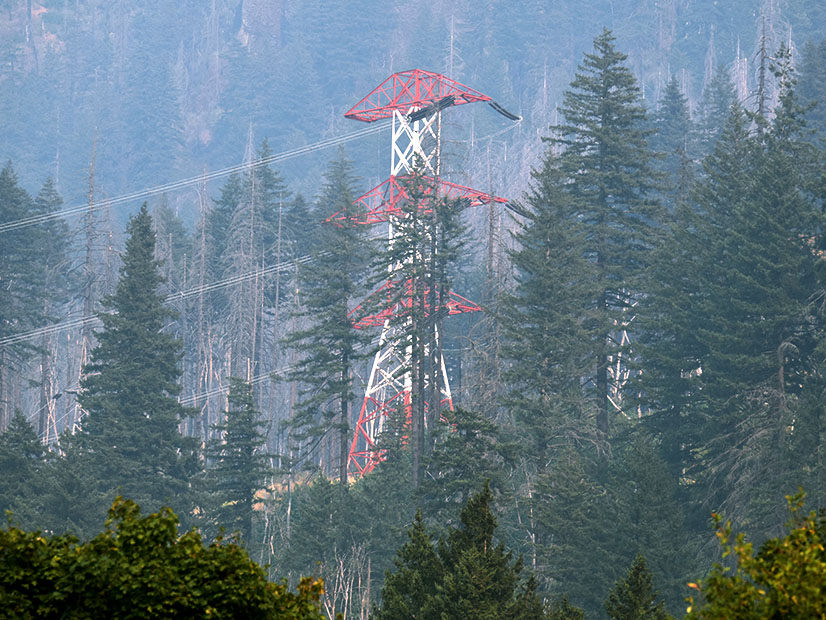The Western Power Pool floated a plan to revamp transmission planning in the West to spur development of the kind of large-scale transmission projects FERC’s Order 1000 has failed to produce.
The Western Power Pool (WPP) on Monday floated a proposal to revamp transmission planning in the West with the aim of spurring development of the kind of large-scale transmission projects FERC’s Order 1000 process has failed to produce.
The proposal, which WPP laid out in a concept paper, envisions creation of a new group, the Western Transmission Expansion Coalition (WTEC), which would “explore a new approach for West-wide transmission planning that will result in an actionable transmission plan to address regional and interregional needs.”
The paper says that while the region’s current planning processes overseen by NorthernGrid in the Northwest, WestConnect in the Southwest and CAISO comply with FERC requirements, “the legal and regulatory structure upon which they were built is limited and has not resulted in the identification of new transmission solutions that result in transmission builds.
“The limited nature of regional planning also handicaps the broader West in developing inter-regional transmission solutions. To effectively address the collective needs of the grid for the future, transmission planning must be performed in a more holistic and coordinated manner, such that a plan for transmission expansion solutions can be optimized to meet a broader set of needs,” the paper says.
WPP spokesperson Kevin Langbaum told RTO Insider that participants in “informal” conversations that produced the plan included WPP, BPA, the Pacific Northwest Utilities Conference Committee (PNUCC), the Northwest & Intermountain Power Producers Coalition (NIPPC), the Public Power Council (PPC), PacifiCorp, Idaho Power, Portland General Electric, Snohomish PUD, Puget Sound Energy and clean energy advocacy group Renewable Northwest.
“At the request of leadership from the Bonneville Power Administration (BPA) in response to stakeholders’ urging and supported by leadership of several energy industry entities and utilities, an informal group formed to discuss approaches to address a widely recognized concern that current transmission planning frameworks in the West do not result in sufficient transmission solutions to support the needs of the future energy grid,” the WPP said in describing the proposal.
The concept paper defines an “actionable” transmission plan as one that would “enhance” regional and interregional reliability, “address economic efficiency and help states achieve their respective goals.” In the paper, “regional” refers to the NorthernGrid transmission planning area covering the Pacific Northwest and Intermountain West, where the proposal originated, while “interregional” denotes all three Western U.S. planning areas — CAISO, WestConnect in the Southwest and NorthernGrid — as well as BC Hydro and AESO in Canada.
Beyond the goal of creating an actionable plan that increases grid reliability and efficiency, the effort also would seek to improve “visibility and coordination” of planning across the West and “support” future cost allocation decisions, although the paper makes clear the WTEC “does not intend to formulate or prescribe a cost allocation standard” for projects.
The concept paper does not provide a technical scope for the effort but instead proposes to establish the structure that would define the scope of the effort.
“While this effort is focused on the production of an initial transmission plan, the WTEC envisions that the process could evolve into a durable, long-term function, including periodic updates and refreshed analysis,” WPP said in the paper.
Two Committees And A Task Force
The paper proposes the WTEC be organized into two committees and a task force to address technical matters around transmission planning.
At the top would be a Steering Committee “comprised of senior and executive leadership from diverse entities committed to the study effort” and “responsible for resolving and making major decisions to structure the transmission plan.”
“While the Steering Committee will make decisions informing the transmission plan, it also carries the responsibility to collaborate with other committees organized to support the effort,” the paper states.
The paper proposes the Steering Committee include representatives from NorthernGrid (including BPA and others to be named), CAISO, WestConnect (including WAPA and others), WECC, Canadian province transmission planning, NIPPC, Renewable Northwest, Interwest Energy Alliance, PNUCC, PPC and WPP. The committee also would include a “state” representative to be determined after consultation with the region’s states.
A Regional Engagement Committee (REC) would consist of representatives from various stakeholder sectors and would “be responsible for providing input and feedback on the approach for the transmission plan, as well as providing input on major decisions informing the transmission plan,” according to the paper.
The REC would consist of two members each from: the Steering Committee, federal power marketing agencies, non-federal power marketing organizations, independent power producers, independent transmission developers, public interest groups, ratepayer advocacy organizations, industrial electricity customers, state agencies and tribes. It also would include four members each from investor-owned utilities and consumer-owned utilities.
The paper also proposes a Technical Task Force that would identify transmission study scope and approach, “including but not limited to renewable energy zones, resource expansion, electrification and load data, and scenario development, including extreme event scenarios, phasing of study outcomes and recommendations, data protocols, etc.”
The task force would consist of technical staff from Steering Committee members, Pacific Northwest National Laboratory, the Northwest Power and Conservation Council, WPP, and merchant and independent transmission developers. It also would include an independent consultant with expertise in transmission selected by the Steering Committee.
The concept paper also outlines the intent for “periodic communications and public webinars to provide stakeholders from the public with input and feedback opportunities.”
WPP is seeking feedback on the proposal and has posed a series of questions for stakeholders regarding the proposed participation structure of the WTEC, the composition of its committees and its plans for broader engagement with the region. Comments are due by Oct. 31 and should be sent directly to WPP CEO Sarah Edmonds at sarah.edmonds@westernpowerpool.org.




